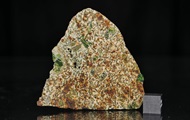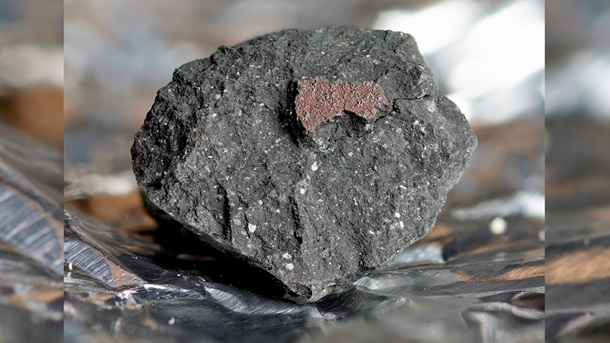
[ad_1]
Researchers are still studying Erg Chech 002 and believe that it can reveal a lot of interesting facts about the formation of planets in the solar system.
The Sahara desert still hides the secrets of the universe. The last such discovery was the Erg Chech 002 meteorite, which appeared a million years earlier than the oldest meteorite previously discovered. In addition, it has a different chemical composition and was formed in the bowels of an ancient protoplanet. Correspondent.net says the details.
The oldest meteorite
Although today scientists have at their disposal about three thousand meteorite samples, whose source is the crust or mantle of rocky bodies, they represent a limited sample of differentiated objects that formed in the early solar system.
75 percent of these meteorites are believed to be fragments of the crust of an asteroid (assumed to be Vesta), and another 20 percent originated from the mantle of a large parent body such as ureilite.
The study of such meteorites allows us to understand the processes that took place in the large bodies at the dawn of the solar system and the diversity of the composition of their mantles and crust.
According to a study published in the American journal Proceedings of the National Academy of Sciences in its last issue of March, the meteorite found last May, with the code name Erg Chech 002, is different from those found before.
In May 2020, several pieces of a meteorite with a total mass of 32 kilograms were discovered in the Erg Shesh region, a sandy desert in the western Sahara, in the southwestern part of Algeria. The debris immediately attracted attention, as it was clear to specialists that the samples did not belong to chondrites, the most common meteorite on Earth.
Scientists believe that Erg Chech 002 is part of a protoplanet. This is the name of a planet in the early stages of its appearance, which has already passed the stage of internal fusion. This is evidenced by the age of the meteorite: analysis showed that it formed about 4.6 billion years ago.
By comparison, the Earth is estimated to be 4.5 billion years old. That is, the meteorite arose a little before our planet. For billions of years, it flew through the vastness of the solar system until, in the end, it fell into the Algerian territory of the Sahara.
“This meteorite is the oldest igneous rock studied, shedding light on the formation of the primary crust that covered the oldest protoplanets,” the study authors write.
Algerian cosmologist Sharif Shabu, one of the country’s leading meteorite specialists, says that Erg Chech 002 was nicknamed emerald because it is composed of a green mineral.
He also regretted in a comment to AL Jazeera that the meteorite was divided among many scientific laboratories around the world, but despite the great weight of the object, there was nothing left for Algeria.
As for why the protoplanet was never born, scientists have a theory: the celestial object was simply destroyed and turned to dust. It is also possible that the protoplanet has become part of some larger object.
The protoplanet’s crust may have been made up of a material called andesite. It is distinguished by the content of a large amount of silica and scientists believe that it is now very difficult to find protoplanets from such material. And all because most of them disappeared without turning into something really great.
Erg Chech 002 consists of 45 percent lamellar albite feldspar (plagioclase and possibly anorthoclase) containing potassium feldspar inclusions, 38 percent pyroxene anhydride, and five percent silica minerals (cristobalite and tridymite).
The meteorite itself formed on or near the surface of the main body, making it a fragment of the magmatic crust of an ancient protoplanet.
To find asteroids of similar composition to Erg Chech 002, the scientists compared the spectra of all known groups with the spectrum of this meteorite.
“Erg Chech 002 is clearly different from all asteroid groups, and so far no object with similar spectral characteristics has been found,” say the scientists.
On February 28, another meteor fell to Earth. Fragments of space rock were found in the small town of Winchcombe in Gloucestershire.

London Natural History Museum
It consists of carbonaceous chondrite. This substance is one of the most primitive and ancient materials in the solar system and is known to contain organic matter and amino acids, the ingredients of the origin of life.
Before colliding with Earth’s atmosphere, the space rock moved at nearly 14 kilometers per second and eventually landed on the Winchcombe Highway. Other parts of the meteorite were discovered nearby.
According to the Natural History Museum in London, images of the fireball, captured by witnesses and the British Meteorite Club’s camera network, helped identify its location and previous location in the solar system.
“Almost all meteorites come from asteroids; these unused building blocks of the solar system can tell us how planets like ours formed, ”says Ashley King, a natural science researcher at the museum.
News of Correspondent.net on Telegram. Subscribe to our channel https://t.me/korrespondentnet